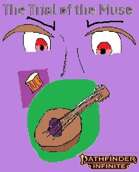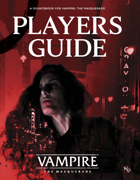Publisher: Skortched Urf’ StudiosSentai Strike! is a dramatic revision of a pair of older sourcebooks: Sentai Spectacular (Otherverse Games, 2011) and Sentai Sequel (Otherverse Games, 2013). These older sourcebooks explored Sentai adventurers through the lens of a D20 Modern Basic Class with multiple talent trees to choose from. In the interest of making this sourcebook fully compatible with the Pathfinder Role Playing Game, the Sentai Hero Basic Class is gone.
The classes’ iconic powers and abilities become new traits, feats and character options, available to any class. One feat slot (well within the capabilities of a starting hero) gives you the ability to transform into a stylish, spandex-clad super-ninja. Some options synergize better with existing Pathfinder Roleplaying Game elements than with others (meaning that a Blue Sentai Hero is more likely to be an Alchemist than a Barbarian), but there’s plenty of room to mix and match, or to play against type.
Sentai Strike! follows the format and design decisions in my recent mega-sourcebook, High Tech Heroes. You can think of Sentai Strike! as a ‘lost chapter’ in High Tech Heroes, offering a deep look at a specific flavor of modern adventure, in the same way that other chapters in that book explore the Lifechain, the grungy politics of Heavy Future or the inner workings of the elite military unit codenamed APEX.
Beyond character options, a variety of Sentai monsters, including a bunch of unique Sentai “boss monsters” provides a challenge for heroes at every level of your campaign. Random chance and procedural design charts let you build an infinite array of truly odd minions and master-villains, fully embracing the wild creativity shown by classic Sentai monster makers and artists.
Finally, we stop in for a long visit to Seraphim Cove. This coastal California town is a nice place to live: except for a small Kaiju problem. Can your game group protect this adventure-friendly small town from the giant monsters that seek its destruction? Seraphim Cove is the second fictional city described for the revised Psi-Watch Campaign Setting. Because it is steeped in Sentai tropes, Seraphim Cove feels and plays a lot differently than Cat’s Cradle. Seraphim Cove looks like a slightly boring slice of Americana, but everyone in town has a Sentai-related secret or two.
What is Sentai?
Sentai is one of the most popular genres in Japanese popular fiction, and this frenetic flavor of sci-fi action-adventure first came to America as the Mighty Morphin’ Power Rangers franchise during the early 1990s. There’s been at least one new Sentai series on Japanese television each and every year since the late 70s, and thanks to the success of the Power Rangers, similar shows have been a staple of American kid’s television for two decades now.
Sentai adventures emphasize teamwork: an elite squad of 5-6 colorful, spandex-clad superheroes use phenomenal gadgets, martial arts talent and equally colorful giant robots to battle alien monsters the size of small office buildings. As a genre, Sentai is predicable and formulaic to a fault: each episode follows a similar pattern. The Sentai team investigates some crisis, fights some low level adversaries until the episode’s real villain reveals itself. After battling the episode’s mastermind to a standstill, the villain grows to enormous size thanks to vile magic or alien technology, and to finally destroy the villain, the heroes must do the same, activating their own mecha or tapping into size changing circuitry built into their costume.Price: $4.99
Go to Source

The Trial of the Muse
Publisher: PaizoThe festival of the muses is the most exciting time of the year for the town of Fugue and the Bard College of the





